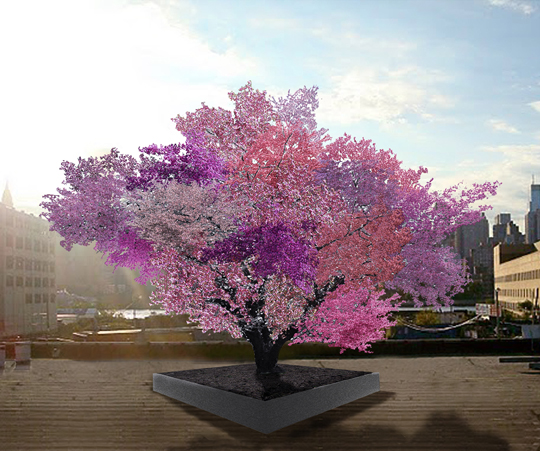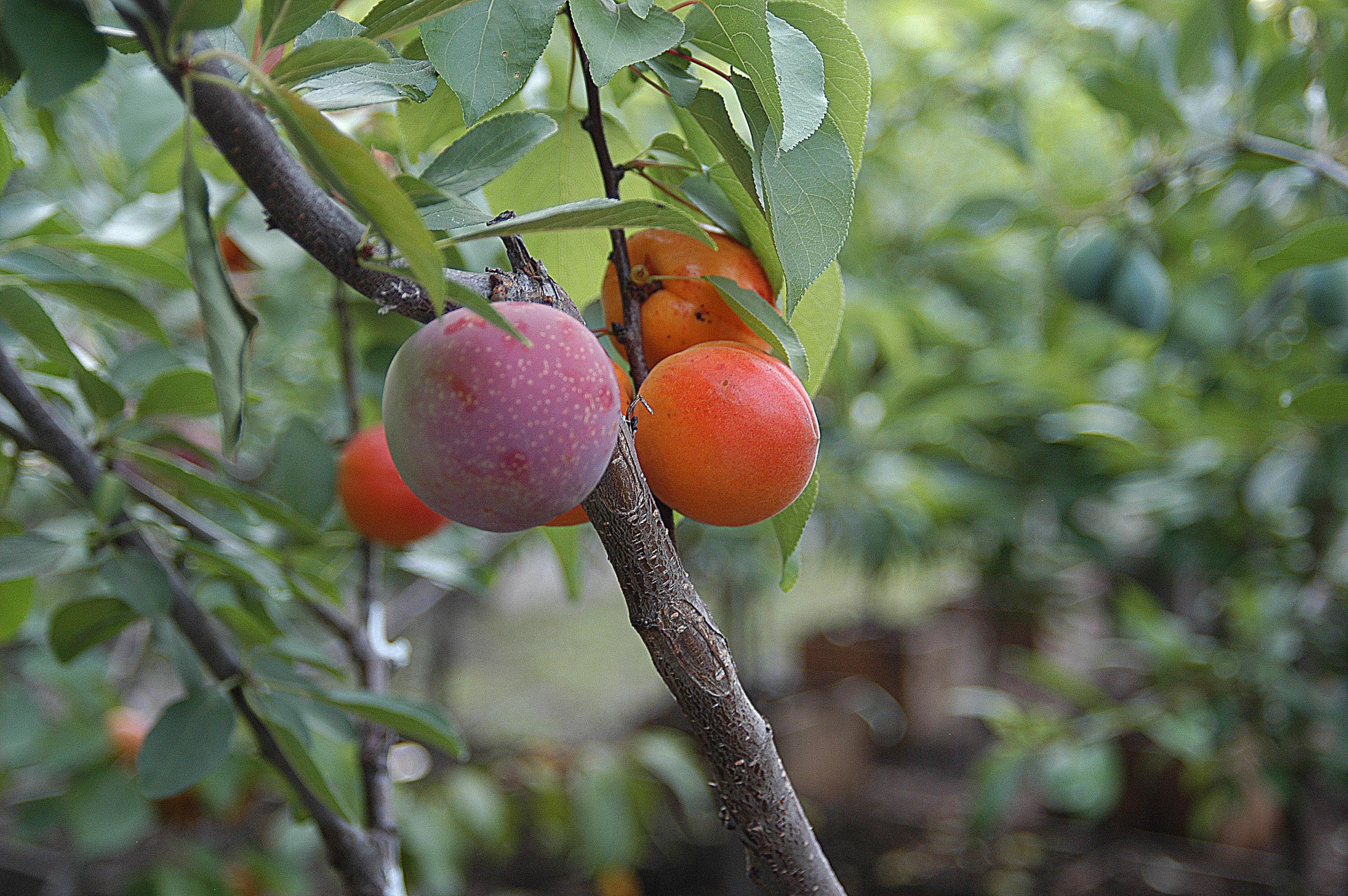
Add this to your truth-is-stranger-than-fiction file: an art professor in upstate New York is modifying plum trees so that each can bear not just one, but up to 40 varieties of stone fruit.
In what feels like the backdrop for a children’s tale — move over James and the Giant Peach; this is the real Giving Tree — Sam Van Aken of Syracuse University has developed a years-long technique that involves grafting buds from various antique, heirloom and native fruit trees onto the branches of a base tree to create one-of-a-kind hybrids. As he explained in a recent TEDx Manhattan talk, “I take a sliver off one of the trees that includes the bud, I insert it into a like-size incision in the working tree, tape it, let it sit and heal in all winter, then I prune it back and hope that it grows.” The result: a single tree that bears 40 varieties of peaches, plums, apricots, nectarines and cherries.

“It started as an art project. I wanted people to have this experience where a tree is blossoming in all these different colors or growing all these different kinds of fruit all at once,” Van Aken told TIME. As he began researching the various stone fruits available, however, he learned that there were literally hundreds that aren’t in stores because of their size, color or short shelf life. That led to the project evolving into a conservation effort for hard-to-find varieties. Among his favorite: Greengage plums, which came to the U.S. from France and look like Granny Smith apples.
Van Aken plans to use proceeds from the trees, which he sells for around $30,000 each, to create an orchard that will serve as an archive of native an antique stone varieties. He’s also growing a small grove of the trees in Portland, Maine, where the trees — and their abundant harvests — will be available to the public. Since it takes nine years to graft branches from 40 different fruit trees onto each base tree, chances are Van Aken’s creations won’t end world hunger. But they might get you to think twice about the fruit you eat next time to you bite into a peach.
More Must-Reads from TIME
- Cybersecurity Experts Are Sounding the Alarm on DOGE
- Meet the 2025 Women of the Year
- The Harsh Truth About Disability Inclusion
- Why Do More Young Adults Have Cancer?
- Colman Domingo Leads With Radical Love
- How to Get Better at Doing Things Alone
- Michelle Zauner Stares Down the Darkness
Contact us at letters@time.com